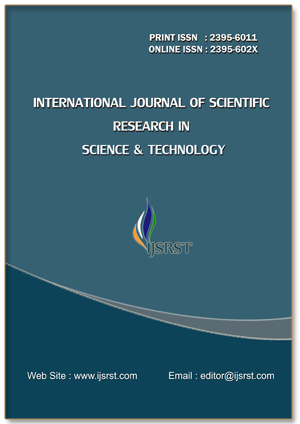Balancing Objectives: An Integrated Approach with Goal Programming and Intellectual Property Rights in Decision-Making
DOI:
https://doi.org/10.32628/IJSRST25123118Keywords:
Goal Programming, Intellectual Property Rights, Multi-Objective Optimization, Decision-Making Framework, Innovation Management, IP Strategy, Resource Allocation, Risk Mitigation, Lexicographic Optimization, Strategic AlignmentAbstract
Contemporary organizational decision-making necessitates reconciling conflicting strategic objectives while navigating complex intellectual property (IP) landscapes. This study proposes a novel integrated framework that synergizes Goal Programming (GP) optimization techniques with Intellectual Property Rights (IPR) considerations to facilitate balanced, legally robust decisions. Traditional multi-objective models often overlook the legal and strategic implications of IPR, risking suboptimal innovation outcomes and competitive vulnerability. Our approach operationalizes IP constraints—such as patent protection, licensing terms, infringement risks, and exclusivity windows—as explicit goals or system boundaries within a GP formulation. Through a case study in Specify Sector pharmaceutical R&D or technology commercialization, we demonstrate how lexicographic/preemptive GP prioritizes critical IP-driven goals freedom-to-operate, IP cost minimization alongside operational targets cost efficiency, time-to-market. Results confirm that the framework significantly enhances decision transparency, mitigates IP-related risks, and aligns innovation investments with organizational strategy. This research contributes to operations management and innovation policy by providing a quantitative methodology for harmonizing economic objectives with IP imperatives, offering practitioners a actionable tool for strategic resource allocation in IP-sensitive environments.
📊 Article Downloads
References
Charnes, A., & Cooper, W. W. (1961). Management models and industrial applications of linear programming. Wiley.
Ignizio, J. P., & Cavalier, T. M. (1994). Linear programming. Prentice Hall.
Jones, D. F., & Tamiz, M. (2010). Practical goal programming. Springer. https://doi.org/10.1007/978-1-84996-321-0
Romero, C. (1991). Handbook of critical issues in goal programming. Pergamon Press.
Aouni, B., Ben Amor, S., & Martel, J. M. (2014). A stochastic goal programming model: Application to portfolio selection. European Journal of Operational Research, 240(2), 536–545. https://doi.org/10.1016/j.ejor.2014.07.028
Teece, D. J. (1986). Profiting from technological innovation: Implications for integration, collaboration, licensing and public policy. Research Policy, 15(6), 285–305. https://doi.org/10.1016/0048-7333(86)90027-2
Somaya, D. (2012). Patent strategy and management: An integrative review and research agenda. Journal of Management, 38(4), 1084–1114. https://doi.org/10.1177/0149206312450652
Reitzig, M., & Puranam, P. (2009). Value appropriation as an organizational capability: The case of IP protection through patents. Strategic Management Journal, 30(7), 687–706. https://doi.org/10.1002/smj.750
Hall, B. H., & Ziedonis, R. H. (2001). The patent paradox revisited: An empirical study of patenting in the U.S. semiconductor industry, 1979–1995. RAND Journal of Economics, 32(1), 101–128. https://doi.org/10.2307/2696400
Granstrand, O. (1999). The economics and management of intellectual property: Towards intellectual capitalism. Edward Elgar. https://doi.org/10.4337/9781781952759
Ernst, H. (2001). Patent applications and subsequent changes of performance: Evidence from time-series cross-section analyses on the firm level. Research Policy, 30(1), 143–157. https://doi.org/10.1016/S0048-7333(99)00103-8
Gans, J. S., & Stern, S. (2003). The product market and the market for “ideas”: Commercialization strategies for technology entrepreneurs. Management Science, 49(4), 292–305. https://doi.org/10.1287/mnsc.49.4.433.14415
Fischer, T., & Henkel, J. (2012). Patent trolls on markets for technology – An empirical analysis of patent assertion entities. Research Policy, 41(9), 1519–1539. https://doi.org/10.1016/j.respol.2012.05.009
Alexy, O., George, G., & Salter, A. J. (2013). Cui bono? The selective revealing of knowledge and its implications for innovative activity. Organization Science, 24(5), 1469–1489. https://doi.org/10.1287/orsc.1120.0795
Bader, M. A., Klos, T., & Zaby, A. K. (2020). Strategic patent valuation and pricing: A framework and application. Journal of Business Research, 110, 466–478. https://doi.org/10.1016/j.jbusres.2020.01.015
DiMasi, J. A., Grabowski, H. G., & Hansen, R. W. (2016). Innovation in the pharmaceutical industry: New estimates of R&D costs. Journal of Health Economics, 47, 20–33. https://doi.org/10.1016/j.jhealeco.2016.01.012
Ziedonis, R. H. (2004). Don't fence me in: Fragmented markets for technology and the patent acquisition strategies of firms. Management Science, 50(6), 804–820. https://doi.org/10.1287/mnsc.1040.0208
Clarkson, G., & Toh, P. K. (2010). Keep out! How patenting shuts down pathways to follow-on innovation. Strategic Management Journal, 31(10), 1062–1083. https://doi.org/10.1002/smj.854
Chang, C. T. (2015). Multi-choice goal programming with utility function under fuzzy environment. European Journal of Operational Research, 243(1), 217–225. https://doi.org/10.1016/j.ejor.2014.11.009
Reitzig, M. (2004). Strategic management of intellectual property. Research Policy, 33(2), 257–272. https://doi.org/10.1016/j.respol.2003.07.008
Creswell, J. W., & Clark, V. L. P. (2017). Designing and Conducting Mixed Methods Research. Sage.
Reitzig, M. (2004). Research Policy, 33(2), 257–272.
Downloads
Published
Issue
Section
License
Copyright (c) 2025 International Journal of Scientific Research in Science and Technology

This work is licensed under a Creative Commons Attribution 4.0 International License.
https://creativecommons.org/licenses/by/4.0




